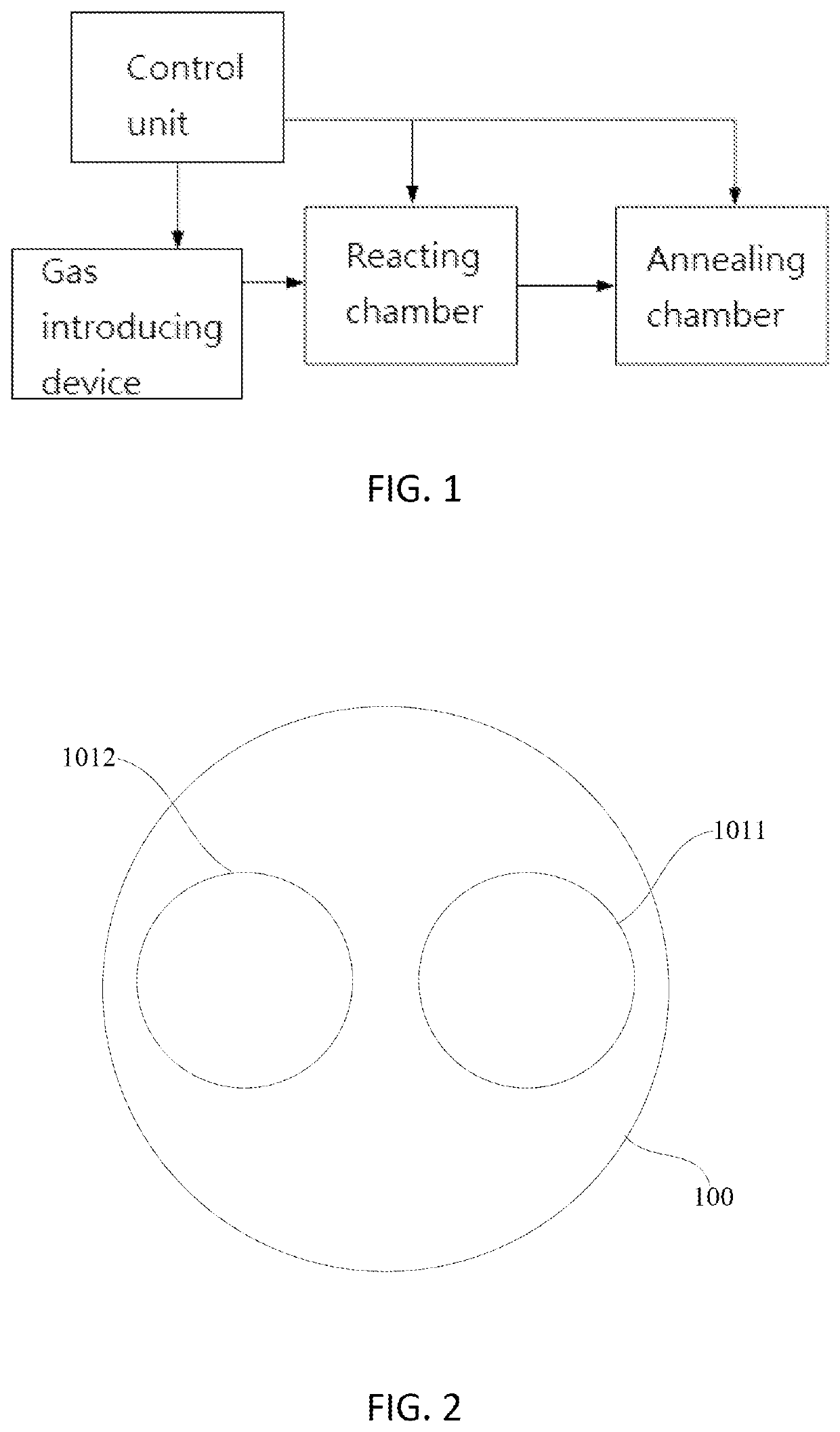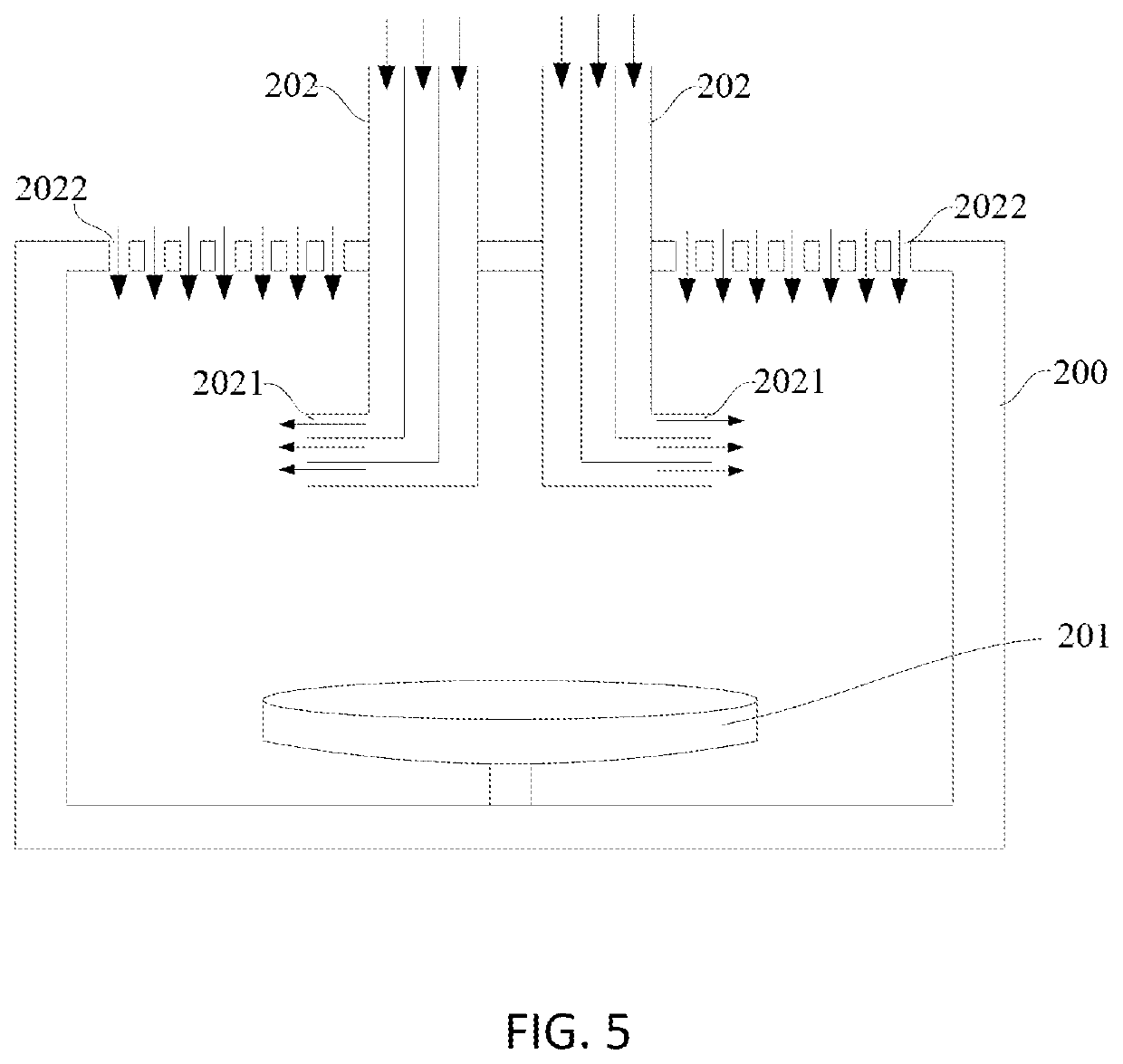New ald method with multi-chambers for sic or multi-elements epitaxial growth
a multi-chamber, multi-element technology, applied in the direction of polycrystalline material growth, crystal growth process, after-treatment details, etc., can solve the problem that the quality of the epitaxial layer requiring higher quality will be affected by the defect in a greater deal
- Summary
- Abstract
- Description
- Claims
- Application Information
AI Technical Summary
Benefits of technology
Problems solved by technology
Method used
Image
Examples
first embodiment
[0038]Traditional ALD (Atomic layer deposition) technologies usually introduce different reacting gases at two sides of a chamber to expose a substrate to different reacting gases in an order through rotating the substrate in the chamber, so as to form different atomic layers on the substrate to form a required film. Such ALD technologies fail to control the different reacting gases respectively, nor precisely control conditions in the chamber, such as temperature. Therefore, they cannot satisfy deposition of a high-quality film.
[0039]In light of aforesaid defects, a present invention according to the present invention provides a ALD apparatus, as shown in FIG. 1. The ALD apparatus comprises a reacting chamber, a gas introducing device connecting to the reacting chamber, an annealing chamber, and a control unit connecting to the reacting chamber, the gas introducing device and the annealing chamber. The gas introducing device connecting to the reacting chamber is used to provide rea...
second embodiment
[0051]A second embodiment provides an ALD apparatus. Referring to FIG. 1, the ALD apparatus comprises the reacting chamber, the gas introducing device connecting to the reacting chamber, the annealing chamber, and the control unit connecting to the reacting chamber, the gas introducing device and the annealing chamber. A bearing step is positioned at a bottom of the reacting chamber to bear the substrate to be deposited with the film. The gas introducing device connecting to the reacting chamber is used to provide reacting gases to the reacting chamber to carry out ALD. The control unit connecting to the gas introducing device is used to select the reacting gases provided by the gas introducing device and control parameters such as gas flow rate of the reacting gases, gas supply period, etc. The control unit connecting to the reacting chamber is used to control a temperature in the reacting chamber, temperature holding period, etc. The control unit connecting to the annealing chambe...
third embodiment
[0058]A third embodiment provides an ALD method which may apply one of the ALD apparatus disclosed in the first and second embodiments. Taking depositing a binary compound crystal for example, preferably, when depositing the binary compound crystal, the ALD apparatus shown in FIG. 4 is used. As shown in FIG. 6, the method may comprise steps of: step S101: placing the substrate to be deposited with a film on a first heater of a reacting chamber; step S102: moderating temperature of the first heater to heat the substrate; step S103: introducing a first reacting gas into the reacting chamber to form a first atomic layer on a surface of the substrate; and step S104: placing the substrate on a second heater of the reacting chamber; step S105: moderating temperature of the second heater to heat the substrate; step S106: introducing a second reacting gas into the reacting chamber to form a second atomic layer on the surface of the substrate, a surface reaction occurring at the second atomi...
PUM
| Property | Measurement | Unit |
|---|---|---|
| Temperature | aaaaa | aaaaa |
| Thickness | aaaaa | aaaaa |
Abstract
Description
Claims
Application Information
 Login to View More
Login to View More - R&D
- Intellectual Property
- Life Sciences
- Materials
- Tech Scout
- Unparalleled Data Quality
- Higher Quality Content
- 60% Fewer Hallucinations
Browse by: Latest US Patents, China's latest patents, Technical Efficacy Thesaurus, Application Domain, Technology Topic, Popular Technical Reports.
© 2025 PatSnap. All rights reserved.Legal|Privacy policy|Modern Slavery Act Transparency Statement|Sitemap|About US| Contact US: help@patsnap.com



